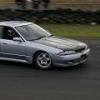Fs- Tein R34 Castor Arms Adj.
Announcements
-
Similar Content
-
Latest Posts
-
By Dose Pipe Sutututu · Posted
Still on his car! He just runs 1 bar of boost through it though - he's keen on putting injectors, Nistune and winding a bit more into it. I'll report back -
How many days/weeks/minutes did it last if it was a Temu turbo?
-
Yeah it is very gentle, easy to stop. Definitely not a GTR thing, but I guess they have almost twice the driveline weight to turn. 3 votes for "its normal" so I'll move on!
-
Ahh I think that is a good thing after that last video......
-





Recommended Posts
Create an account or sign in to comment
You need to be a member in order to leave a comment
Create an account
Sign up for a new account in our community. It's easy!
Register a new accountSign in
Already have an account? Sign in here.
Sign In Now